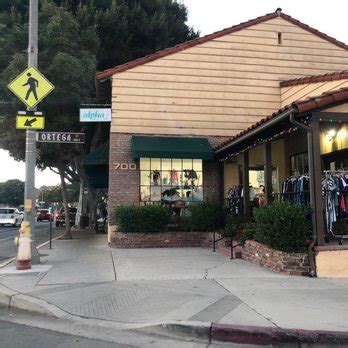The legend of Santa Claus has been a cornerstone of holiday cheer for centuries, with his jolly demeanor and gift-giving spirit bringing joy to children and adults alike. However, behind the myth and magic, there lies a historical figure whose life and death have been shrouded in mystery. The question of whether Santa died is a complex one, woven into the fabric of history, folklore, and cultural tradition. To unravel the truth, we must delve into the life of Saint Nicholas, the historical figure upon whom the modern concept of Santa Claus is based.
Saint Nicholas, a bishop of Myra in modern-day Turkey, lived during the 4th century. He was renowned for his generosity, especially towards children, and his feats of kindness and charity have become the stuff of legend. One of the most famous stories about Saint Nicholas involves him saving three sisters from being sold into slavery by providing them with dowries to marry. This act of kindness, along with many others, solidified his reputation as a guardian of the innocent and a bringer of gifts.
Historical records indicate that Saint Nicholas died on December 6, 343 AD, in Myra. His feast day, December 6 (or 5 in some countries), is still celebrated in many parts of the world, often with the exchange of gifts and acts of charity. Over time, the legends of Saint Nicholas merged with other cultural and folkloric figures, such as the Dutch Sinterklaas and the Germanic god Odin, to form the modern concept of Santa Claus.
The evolution of Santa Claus from Saint Nicholas to the jolly, gift-giving figure in the red suit is a story of cultural fusion and adaptation. The influence of literature, particularly Clement Clarke Moore’s “A Visit from St. Nicholas” (better known as “The Night Before Christmas”) in 1823, and the illustrations of Thomas Nast in the late 19th century, helped to cement the image of Santa as we know it today. The idea of Santa as an immortal, ageless figure, always ready to bring joy and happiness, became ingrained in popular culture through media, advertising, and family traditions.
However, the historical Saint Nicholas did indeed die, leaving behind a legacy that would evolve into the mythical figure of Santa Claus. His death marks the end of a life dedicated to service and kindness, but it does not diminish the impact of his spirit, which continues to inspire generosity and goodwill during the holiday season.
Understanding the Legacy of Saint Nicholas
To fully appreciate the significance of Saint Nicholas and his transformation into Santa Claus, it’s essential to explore the historical context and the cultural influences that have shaped this iconic figure. The blend of Christian tradition, folk mythology, and secular celebrations has created a complex and multifaceted character, embodying the values of giving, kindness, and joy.
The Historical Context
- Early Life and Deeds: Saint Nicholas was born into a wealthy family but dedicated his life to helping the poor and needy. His reputation as a miracle worker and a defender of the faithful spread far and wide, contributing to his canonization as a saint.
- The Council of Nicaea: Saint Nicholas is often depicted as a participant in the Council of Nicaea, where he allegedly slapped Arius for his heretical views, showcasing his passion for the orthodox faith.
- Veneration and Legacy: After his death, Saint Nicholas’s tomb in Myra became a pilgrimage site, and his relics were later moved to Bari, Italy, further spreading his cult. His feast day was celebrated with gift-giving, reflecting his reputation for secret generosity.
Cultural Influences
- Dutch and Germanic Traditions: The figure of Sinterklaas in Dutch folklore and the Odin myth in Germanic cultures contributed elements to the Santa mythos, such as the bearded man bringing gifts on a specific night.
- Literary and Artistic Representations: Works like “A Visit from St. Nicholas” and illustrations by Thomas Nast played crucial roles in solidifying the modern image of Santa Claus, including his appearance, mode of transportation (sleigh), and timing of gift delivery (Christmas Eve).
The Enduring Spirit of Santa Claus
While the historical Saint Nicholas may have passed away, his spirit, as embodied by the figure of Santa Claus, continues to thrive. The essence of Santa—generosity, kindness, and the joy of giving—remains a powerful force in modern society, transcending the boundaries of culture, religion, and geography.
Contemporary Relevance
- Global Celebrations: Christmas and other winter festivals have become occasions for people around the world to come together, exchange gifts, and celebrate the values of compassion, love, and generosity.
- Symbolism and Metaphor: Santa Claus serves as a symbol of the human capacity for kindness and altruism, reminding us of the importance of considering others, especially during times of celebration.
- Evolution of Tradition: The story of Santa Claus, from its origins in the life of Saint Nicholas to its current form, demonstrates how cultural and religious traditions can evolve over time, incorporating new elements while retaining core values.
Conclusion
The question of whether Santa died is a multifaceted one, touching on history, folklore, and the enduring power of myth and tradition. While Saint Nicholas, the historical figure behind the legend of Santa Claus, did indeed pass away, his legacy lives on, inspiring countless acts of kindness and generosity each year. The spirit of Santa Claus, as a symbol of goodwill and joy, continues to captivate hearts worldwide, ensuring that the essence of his story remains timeless and universal.
What is the historical basis for the figure of Santa Claus?
+The historical figure of Saint Nicholas, known for his generosity and kindness, especially towards children, serves as the basis for the modern concept of Santa Claus. Over time, the legends of Saint Nicholas merged with other cultural figures to form the image of Santa as we know it today.
When did Saint Nicholas die?
+Historical records indicate that Saint Nicholas died on December 6, 343 AD, in Myra, which is now modern-day Turkey. His feast day, December 6, is still celebrated in many parts of the world.
How did the image of Santa Claus evolve over time?
+The image of Santa Claus evolved through a combination of cultural influences, literary works, and artistic representations. Figures like the Dutch Sinterklaas, the Germanic god Odin, and literary depictions in works such as “A Visit from St. Nicholas” contributed to the development of the modern Santa Claus image.



